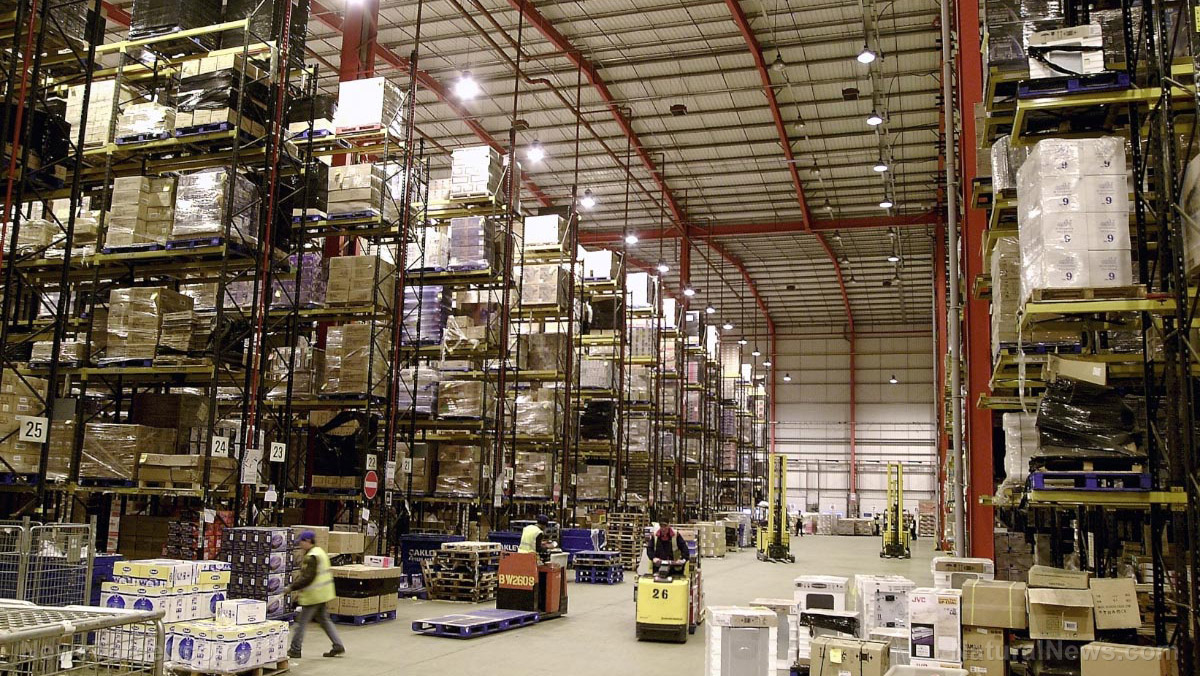Solar-powered desalination device vaporizes seawater to produce safe drinking water
05/02/2021 / By Virgilio Marin

Researchers developed a solar-powered desalination device that vaporizes saltwater to produce potable water. The unit works thanks to a titanium-based material that captures solar energy and powers evaporation.
Made of a special type of paper coated with a compound called titanium nitride oxide, the material heats rapidly and vaporizes water when exposed to the sun. The resulting water vapor is then condensed and collected via a container with a sloped quartz roof.
The researchers found that water desalinated using the technology contains lower levels of salt than ordinary drinking water. They added that the desalination unit can be rapidly deployed in remote seaside areas without access to potable water.
The findings of the study were published in the journal AIP Advances.
Breaking down the desalination unit
The entire desalination unit consists of a box with a sloped quartz roof. Inside the box is a reservoir of seawater and above this is an evaporation unit, which purifies seawater by vaporizing it.
The evaporation unit consists of three parts: a solar absorber on top, a thermal insulator and a wicking material. The thermal insulator is made of polyethylene foam, which has many air-filled pores that trap heat and allow the evaporation unit to float on top of the seawater reservoir.
The foam is wrapped in a highly porous type of paper known as air-laid paper. Made from wood fibers and commonly used for disposable diapers, this air-laid paper wicks away water from the receptacle and supplies it to the solar absorber.
Meanwhile, the solar absorber is made of titanium nitride oxide, a common coating material widely used for solar hot water systems and solar panels. The compound absorbs copious amounts of solar energy while reemitting low amounts of heat. In addition, it efficiently converts solar energy into heat energy.
The researchers also used air-laid paper as a substrate (material in which something is deposited) for the titanium nitride oxide. According to Chao Chang, a marine engineer from Dalian Maritime University in China and the lead researcher of the study, one of the advantages of using air-laid paper is that it could be reused more than 30 times.
The researchers tested the desalination unit and found that it was able to decrease salinity to less than two milligrams per liter (mg/L). By comparison, the salinity of seawater is more than 75,000 mg/L while that of ordinary drinking water is around 200 mg/L.
Additionally, a salt layer did not form on the solar absorber even after long periods of use. The researchers attributed this to the porous nature of the air-laid paper, which wicks salt and returns it into the seawater receptacle. This lack of fouling is advantageous because a concentration of salt in the absorber could reduce the unit’s efficiency. (Related: Scientists use cheap plastic lenses to make solar-powered desalination systems more effective.)
In all, the desalination unit is an effective device that can be deployed easily in remote seaside areas, especially those that experience water shortages. The researchers noted that while much of the planet is covered in water, only a total of 2.5 percent is drinkable. The solar-powered device could be used to address water shortages in coastal communities without access to potable water.
More solar-driven desalination technologies
Last year, researchers from Massachusetts Institute of Technology led the development of a simple solar-powered desalination system that similarly vaporizes seawater to remove salt.
The device is composed of multiple layers of flat solar evaporators and condensers lined up in a vertical array. As sunlight passes through a transparent insulating layer, it heats up a heat-absorbing layer next to the insulator. This heat absorber then transfers the heat to a layer of wicking material, which absorbs seawater from a reservoir below. The seawater then condenses on another layer, where it drips off to be collected as fresh, potable water.
Experiments showed that the technology could provide more than 1.5 gallons of fresh drinking water per hour for every square meter of solar collecting area.
Learn more about desalination and other water purification technologies at WaterFilters.news.
Sources include:
Tagged Under: air-laid paper, breakthrough, clean water, desalination, discoveries, drinking water, future science, future tech, green energy, innovation, inventions, potable water, renewable energy, research, science and technology, seawater, solar energy, solar power, solar-powered desalination device, technology, titanium nitride oxide, water filtration, water health, water purification, water shortage
RECENT NEWS & ARTICLES
Electricity.News is a fact-based public education website published by Electricity News Features, LLC.
All content copyright © 2018 by Electricity News Features, LLC.
Contact Us with Tips or Corrections
All trademarks, registered trademarks and servicemarks mentioned on this site are the property of their respective owners.





















